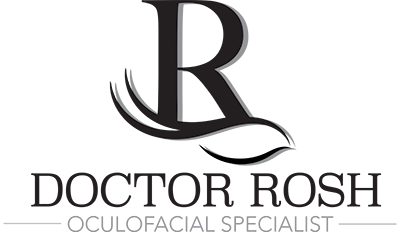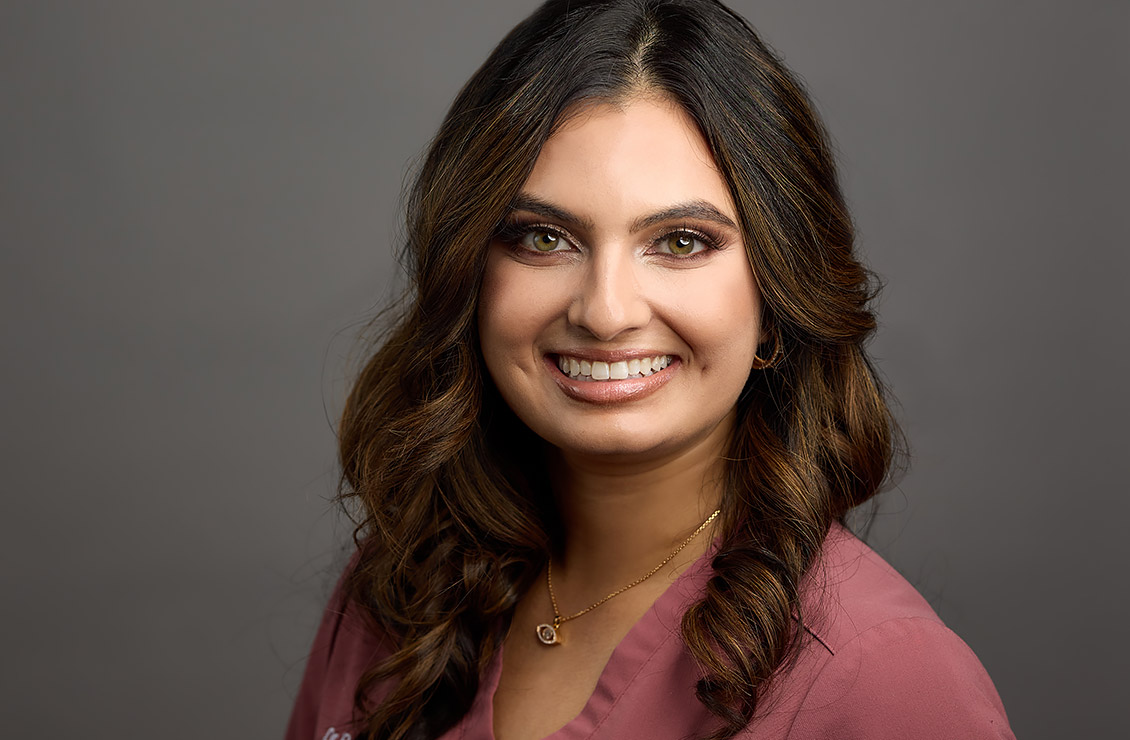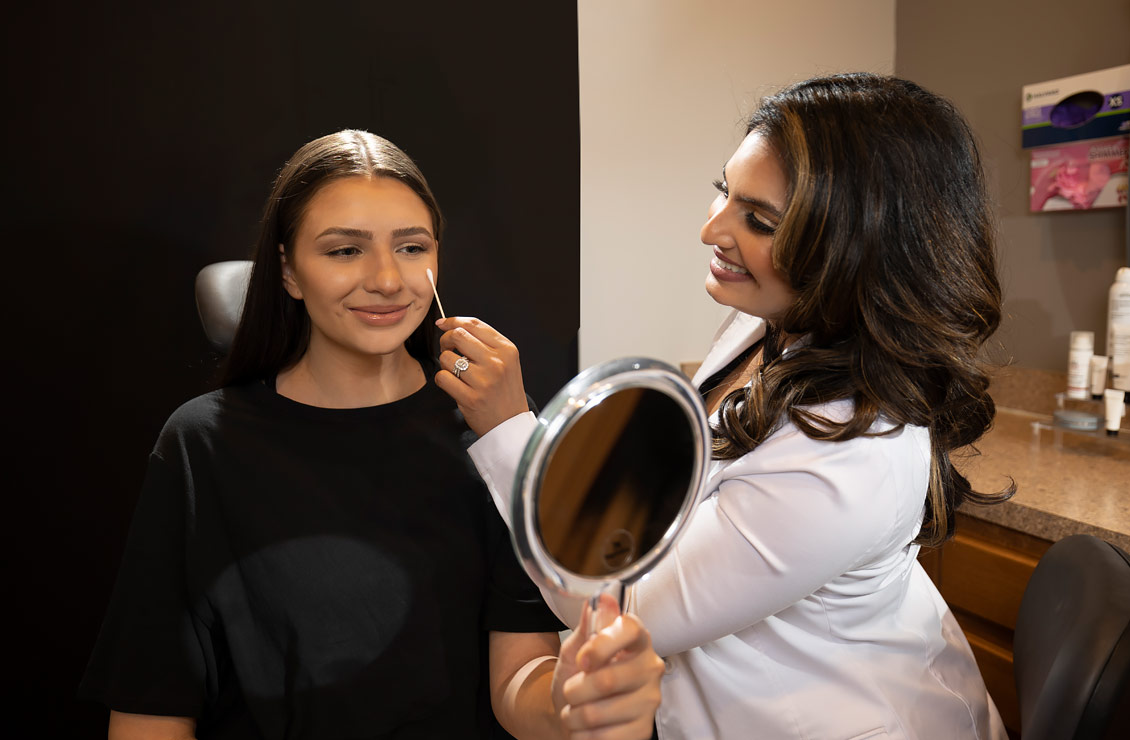Lower Lid Blepharoplasty
Home » Services » Cosmetic Surgical » Lower Lid Blepharoplasty
Lower Lid Blepharoplasty
There are 3 fat pads in the lower orbit: medial, central, and lateral fat pad. They are located behind a thin fibrous layer called the orbital septum. With age, the septum thins and allows the fat to protrude. Lower lid blepharoplasty removes these fat pads through a hidden transconjunctival incision on the posterior part of the eyelid. The fat does not return after it is removed. The eyelid skin is thin and can appear crepey after the fat pads are removed (or in some cases repositioned), from stretching, which is why CO2 or Erbium laser resurfacing is recommended at the same time to tighten the skin and smooth out wrinkles. Laser skin resurfacing not only improves the wrinkle pattern but also promotes new collagen formation, which decreases the appearance of dark circles.
The goal of this procedure is to not only unpack the bags but also give the face a more rested look while maintaining the unique shape of the eyelid.
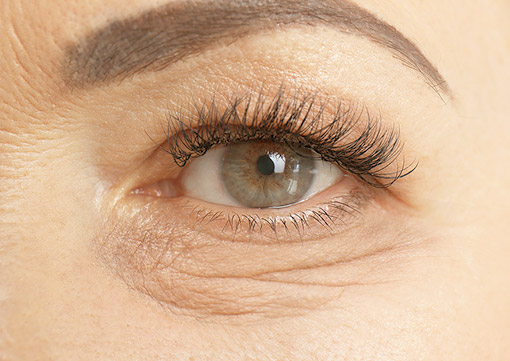
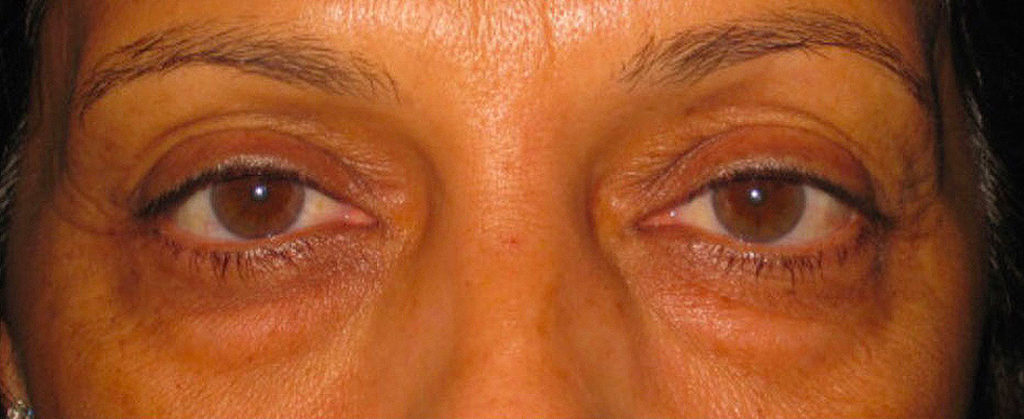
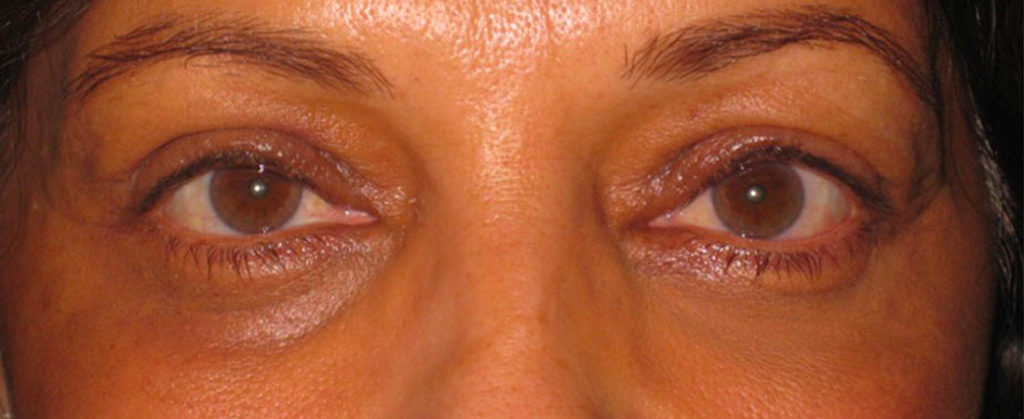
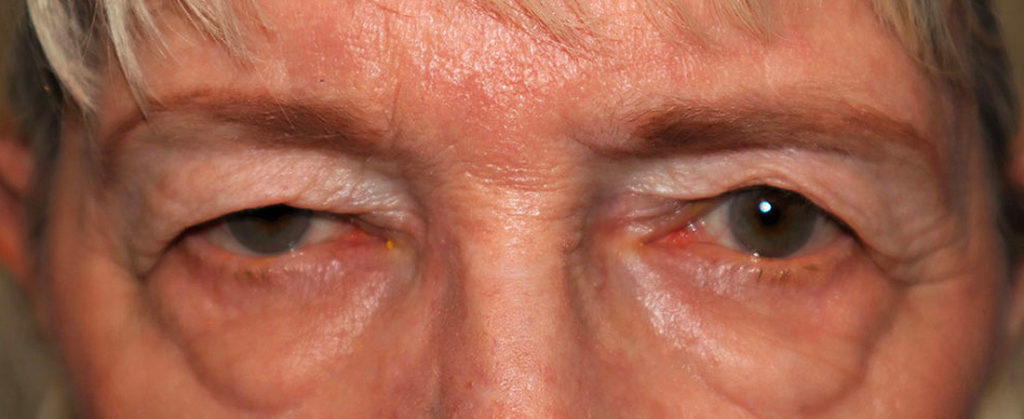
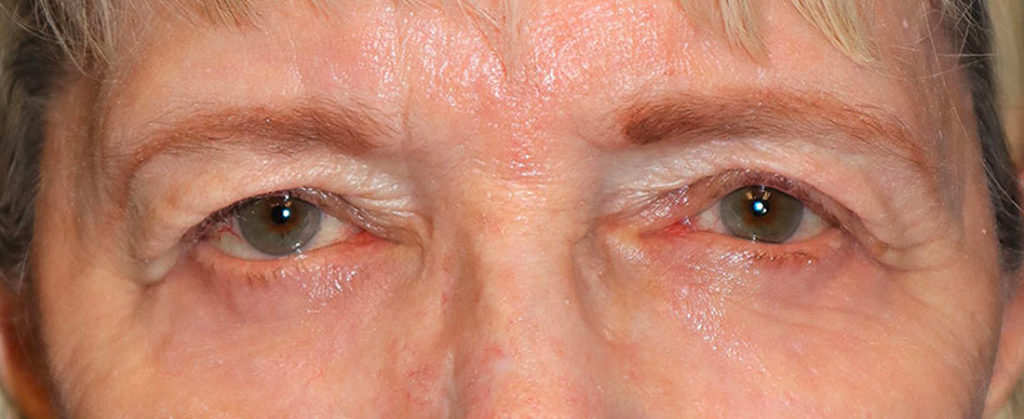
This is usually performed under local anesthesia, although it can also be done under general anesthesia per patient request. It usually takes about an hour to perform. This can be done in conjunction with upper lid blepharoplasty or upper lid ptosis procedure as well and peri-ocular or full face and neck laser skin resurfacing.
This varies per patient, but about 80% of swelling decreases by month 1, and the residual 20% can take several months to resolve. There are no stitches to remove from the lower lid and patients are usually seen at the following intervals postoperatively: 1 week, 1 month, 3 months. Some patients may benefit from lower eyelid filler around week 4-6 post procedures to improve hollowness from bony reabsorption that occurs with age. No bandages are placed after the procedure, but detailed instructions will be given about ice and head positioning to decrease swelling after the procedure.
As with any surgical procedure, there are certain risks associated with a lower blepharoplasty procedure, which Dr. Rosh will review at your consultation.
Schedule your individual
treatment plan today!
